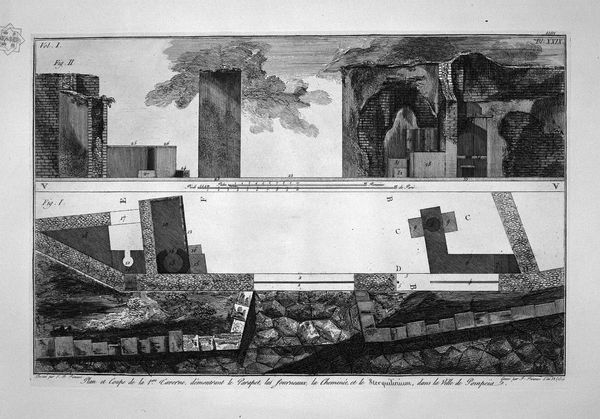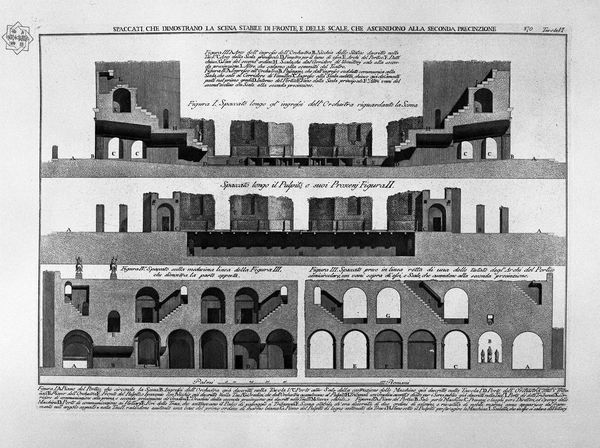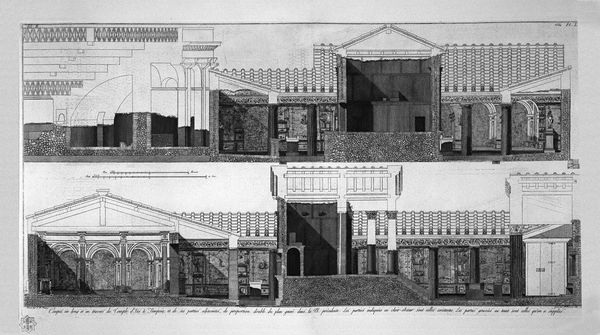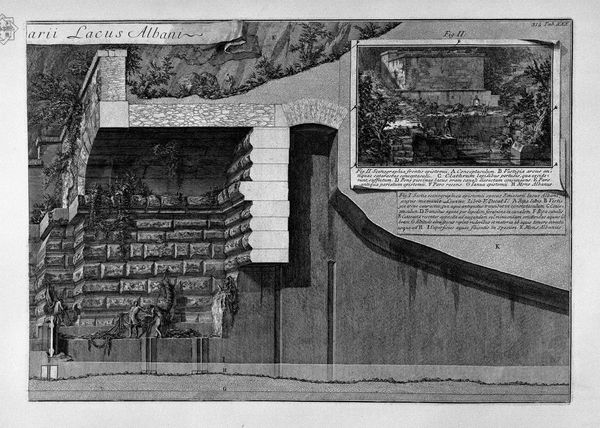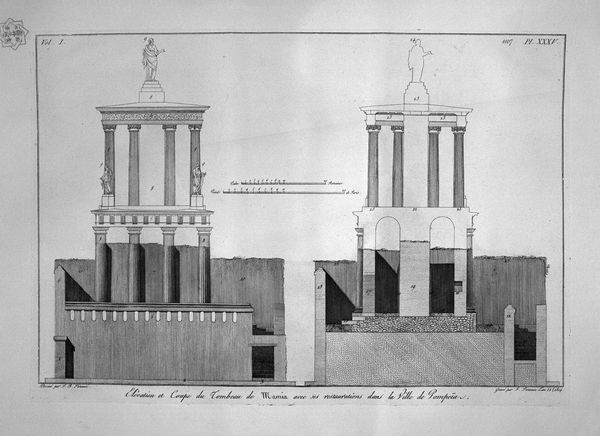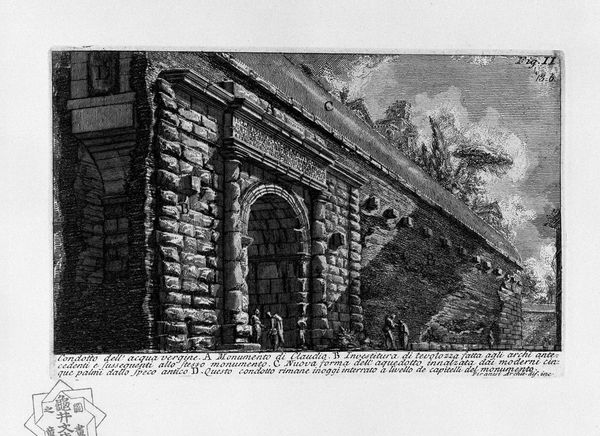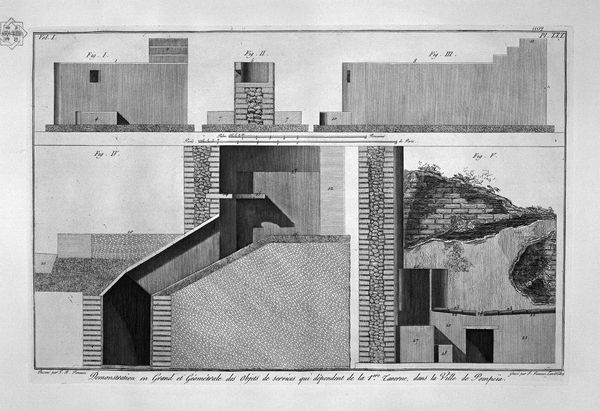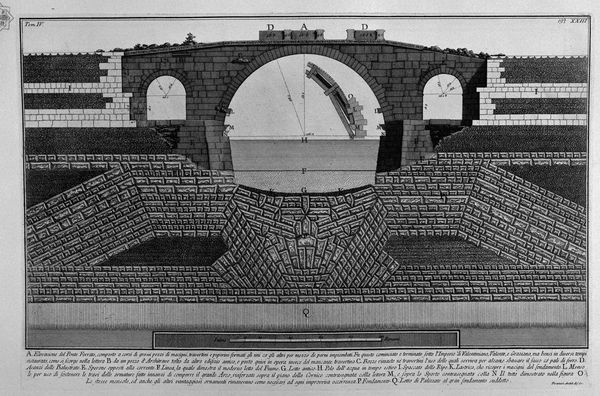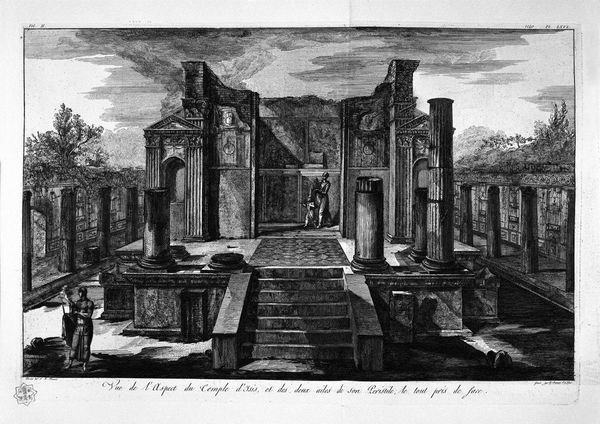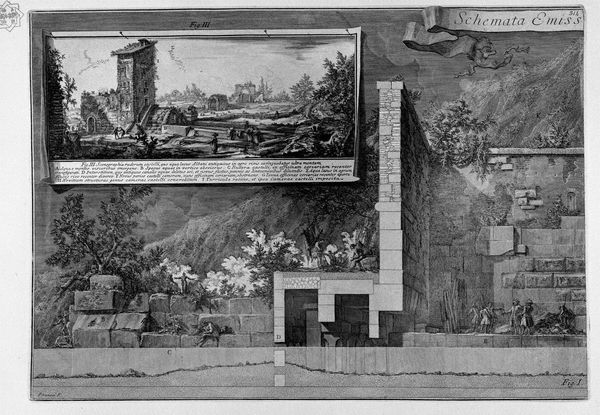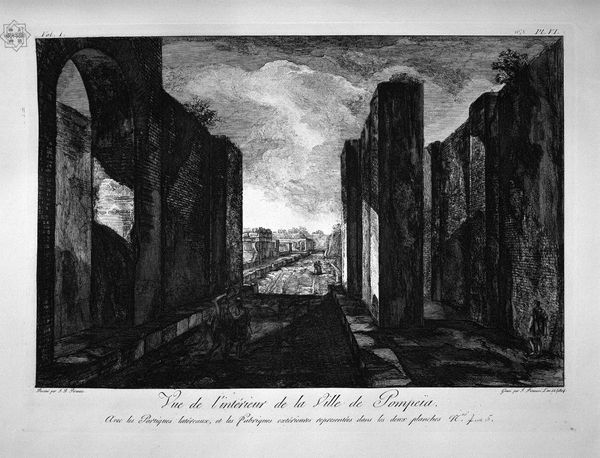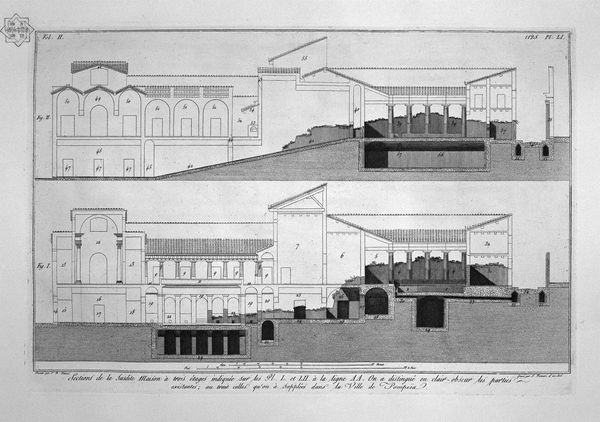
drawing, print, etching, architecture
#
drawing
# print
#
etching
#
perspective
#
ancient-mediterranean
#
architecture
Copyright: Public domain
Curator: This etching by Giovanni Battista Piranesi presents the "Plan and Elevation of the Second Tavern on the Right," offering us a meticulous glimpse into the architectural structures of ancient times, possibly Pompeii. The stark monochromatic palette heightens the drama, wouldn't you say? Editor: Absolutely. My immediate impression is of ruins laid bare. There's an overwhelming sense of desolation here, almost as if the print captures a moment of collective trauma frozen in time, emphasizing social precarity throughout history. The bare walls and the eroded architecture evoke narratives of displacement. Curator: I see it more as a preservation effort, actually. The details, though stark, convey a reverence for classical architecture. Note how the elevation provides insight into building methods and spatial relationships – it is as though we were there at the beginning. Editor: Yes, but within that preservation, the artist highlights the crumbling aspects, those reminders of societal collapse, of a world not preserved in the ways Piranesi, in his own time, expected. What purpose do taverns serve if not the building up of a social network? Curator: Tavern architecture, with the snake symbol… that's rather striking. I wonder what symbolism might lie behind the integration of tavern with snakes; it feels like an Ouroboros with life and death intertwined, suggesting transformations occurring from past until present. Editor: A cyclical notion, precisely, linking architectural form to shifting power dynamics across time. The tavern—as a space of potential community—collapses. This reminds me of studies concerning gentrification, displacement, loss and powerlessness experienced across demographics and histories; even now, marginalized communities see these forms replicated, whether consciously or unconsciously. What continuities are revealed by art historical inquiry? Curator: I appreciate your reading that political current throughout time in the prints themselves! I find them both timeless, speaking of fundamental architectural forms while carrying symbolic potency. It is a view not just backward, but a reflection on our constant need for community. Editor: Precisely, that intersection of art and life. Looking back helps us to critically examine the power structures of our present reality and to resist their perpetuation through cultural erasure and displacement. Curator: It’s fascinating to explore such varying dimensions within one single piece of art, which is a symbol for historical, artistic, psychological, and societal reflection. Editor: It absolutely is. I'll never look at tavern architecture the same way again, considering these cycles of transformation and, indeed, potential.
Comments
No comments
Be the first to comment and join the conversation on the ultimate creative platform.
